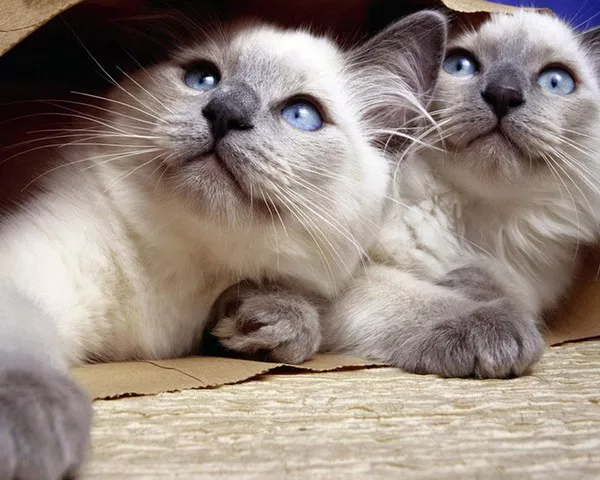The global spread of the H5N1 avian flu outbreak, which has been devastating to both wild birds and poultry, is now extending to mammals, raising concerns about the potential for a human outbreak.
In a parallel to lessons learned from the Covid-19 pandemic, swift and comprehensive responses to outbreaks are crucial. However, it appears that the Covid-19 pandemic has not taught us enough, and the situation is far from humorous.
The escalating H5N1 outbreak at fur farms in Finland and the unexplained outbreak among domestic cats in Poland highlight the challenges of controlling the spread of this avian flu variant.
Finland, a significant fur producer in Europe, is grappling with outbreaks among captive minks, foxes, and raccoon dogs, which are species more prone to evolving variants that could infect humans, potentially leading to a human outbreak.
Remarkably, even the Finnish Food Authority acknowledged that minks are susceptible to both human and avian influenza, and the viruses can potentially recombine to generate an avian flu strain capable of infecting humans. Despite this, fur farms in Finland are not being shuttered. Instead, the Finnish Wildlife Agency has permitted fur breeders to cull wild birds in large numbers near their farms, purportedly to prevent contact between infected birds and farm animals. However, scientists argue that this approach is flawed and unlikely to be effective, as more fur farms in Finland continue to report new outbreaks.
Simultaneously, authorities in Poland reported a significant H5N1 outbreak among pet cats this summer, leading to the deaths of at least 29 animals, although some reports suggest as many as 89 cats fell ill. This outbreak raises alarming concerns due to its unique characteristics, yet there has been no clear explanation or thorough investigation into its origin.
Curiously, the viruses from the affected cats in Poland shared nearly identical genetic sequences despite the cats being geographically distant from one another. Since wild birds are an improbable source, given that some of the cats never ventured outdoors and the outbreak did not spread to neighboring countries, it is evident that the outbreak originated within Poland.
Experts and cat owners suspect that cat food may be a contributing factor. Adding complexity, the virus from all the sick cats in Poland carried two specific genetic mutations that are mostly found in mammals. This indicates that either all the cats were infected and independently developed these mutations, or the mutations were already present in the source of the infection.
Tom Peacock, a researcher in influenza at Imperial College in Britain, indicated that the most plausible scenarios involve cats consuming meat from sick mammals or birds with viruses that had evolved the mammalian-specific mutations.
Both scenarios are concerning, and the manner in which geographically separate cats were infected with H5N1 remains unclear.
In Poland, researchers were able to analyze only five samples of cat food, and one sample of chicken meat intended for human consumption, which was also fed to the cats, tested positive for H5N1. However, the scientific report notes that this single sample could have been contaminated after the animal became sick within the household.
H5N1 has also been recently detected in two cat shelters in Seoul, South Korea. Authorities suspect cat food as the potential source and have recalled two varieties of cat food from a specific brand. While investigations in Korea may yield insights, this situation differs from Poland’s as the Korean cats were housed together.
A comprehensive examination of the food supply chain is imperative to identify the true source of the outbreak.
Regrettably, if an investigation is underway in Poland, authorities have not yet shared information about it with the public.
Poland is the largest poultry exporter in the European Union, making any connection to the poultry food chain economically concerning. The country is also a significant operator of mink farms. The possibility of minks contracting H5N1 and their meat contaminating the food supply, ultimately reaching domestic cats, is a valid concern.
However, mink farms in Poland have become enmeshed in the country’s cultural and political debates. A previous attempt to ban mink farms in 2020 led to political tensions and widespread opposition, particularly from the far right. Consequently, mink farms in Poland remain operational.
This shortsightedness is not unique to a specific political ideology. In the United States, a provision to ban mink farming was included in a House bill last year but was ultimately rejected in the Senate, with both Democratic and Republican senators participating in removing the ban.
The situation on Poland’s mink farms remains unclear. While it is possible that Poland is effectively managing and containing mink outbreaks, it is equally plausible that these outbreaks are going unnoticed due to insufficient surveillance efforts. A milder outbreak among minks may be overlooked, especially if there is inadequate surveillance. Such outbreaks could potentially lead to a larger pandemic, as the early stages of milder outbreaks might be harder to detect.
Species like minks and foxes, typically fur-bearing animals, are carnivorous mammals that usually hunt alone. Housing them in confined spaces fosters the rapid spread of diseases and presents ethical concerns.
These fur-bearing animals are highly susceptible to various respiratory illnesses, including H5N1. Denmark, the world’s leading mink farmer in late 2020, struggled to contain Covid-19 outbreaks on its mink farms, which resulted in the generation of new variants that could infect humans. Although Denmark initially suspended its mink farms, they have since resumed operations.
It is time to take action by banning fur farms, which are inhumane, risky, and unnecessary. Moreover, enhancing surveillance and reporting requirements for mammal-based H5N1 outbreaks is imperative.
Providing compensation to fur farmers in Europe and the United States could be a more economical approach than dealing with a potential human outbreak. Additionally, it aligns with the natural decline of the fur industry. The executive director of Fur Commission USA, Challis Hobbs, revealed that the number of mink farms in operation has already decreased, making a shift away from fur increasingly apparent. Collaborative international efforts could also lead to enhanced surveillance and potentially a global ban.
Furthermore, enigmatic outbreaks like the one in Poland should not be allowed to go uninvestigated. The lessons from the past should serve as a reminder that viruses disregard borders, demanding thorough and transparent investigations.
As experience has shown, borders and jurisdictions hold little sway over viruses, yet we seem to have failed to heed the lessons from past outbreaks.


























